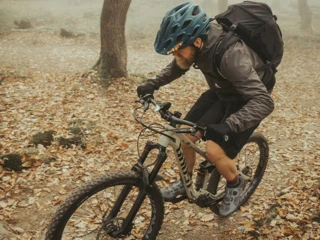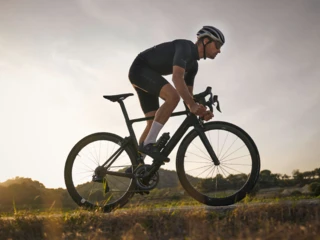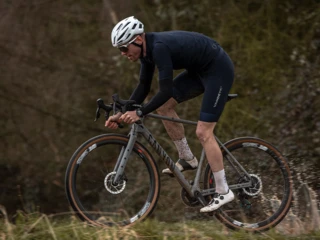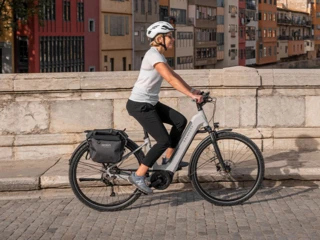Tubeless or TPU Tube? Which System is Better for Me?
Veröffentlicht am
Tubeless or TPU tube? Which system suits you and your bike better? Here you’ll find all the important information!
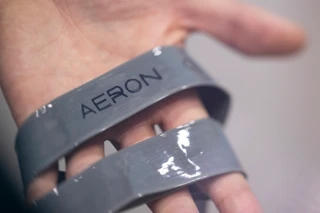
For more than 130 years, the butyl tube has been established as the bicycle tube for most cyclists. In recent years, however, butyl tubes have been facing increasing competition from various manufacturers with different products. The competitors in the race to determine which system is best for cyclists are:
- Latex tubes
- TPU tubes
- Tubeless systems
We have already looked at a system comparison between TPU tubes and latex tubes on this website. The following will now focus on the comparison between AERON TPU tubes and tubeless systems.
Which is Better, Tubeless or Tube?
Some questions cannot be fully and definitively answered. Both systems have their advantages and disadvantages. Rather, we need to look at which system is best suited for whom. Tubeless has become increasingly popular in recent years, especially among riders who use a mountain bike (MTB) or a gravel bike. Compared to conventional butyl tubes, tubeless has the following advantages:
- Higher puncture protection (especially against snake bites but also against punctures)
- Better handling (tire conforms better to the ground in corners)
- More comfort due to lower air pressure
- Lighter than butyl tubes
However, the tubeless system also has disadvantages:
- Installation with sealant requires practice
- If a hole cannot be sealed with sealant, it gets messy
- The valve tube can clog with sealant at the base, making it difficult for air to pass through when pumping
- The valve core can stick, making it difficult to remove the valve insert with finger strength
Tubeless or Lighter Tube?
Good question. Assuming we mean a conventional butyl tube with the word "tube," then all experiences of recent years, at least among performance-oriented riders in the MTB and gravel bike sector, clearly lean towards tubeless. Those who want to ride quickly, comfortably, and safely through the terrain and avoid tire damage as much as possible cannot avoid tubeless.
TPU Tube or Tubeless?
Here it gets interesting. If we explicitly mean a TPU tube or even an AERON/TPU tube with the word "tube" or "inner tubes," then the situation looks very different because TPU tubes have the following advantages over conventional butyl tubes:
- Lighter
- Function with less pressure
- More puncture-resistant, i.e., much less likely to have a flat tire
- Better rolling resistance
- Smaller packed size
- Less air loss
- Heat resistant even with rim brakes
- More sustainable
With these advantages of an AERON/TPU Airtube over a butyl tube, the comparison between tube and tubeless suddenly becomes much more interesting.
Let's look at the individual parameters to decide between a tubeless system and TPU tubes.
Rolling Resistance
Puncture Protection
Weight
Tubeless = More Comfort?
When it comes to ride comfort and a good riding feel, tubeless is indeed at an advantage compared to all other systems. The tire can be ridden with low pressure and can thus conform very well to ground irregularities and in corners, providing a lot of grip. TPU tubes, however, are not far behind. They are also stable in shape at low pressure. Significantly lower air pressures can be ridden than with conventional butyl tubes, which also increases comfort and safety.
Can I Install TPU Tubes on Tubeless Rims?
Of course. Many riders who initially opt for a tubeless system carry TPU tubes as spare tubes because these tubes are extremely light and compact – in addition to the riding characteristics that are already very close to those of tubeless systems. So, normal clincher rim or tubeless rim and TPU tube – no problem.
Which is Better, a Tubeless System or a Light TPU Tube?
Ultimately, it is – as mentioned above – a matter of weighing the options. A very light TPU tube comes extremely close to a tubeless system in terms of rolling resistance. However, with a very light TPU tube, puncture protection is naturally somewhat lower. AERON/TPU Airtubes are available in all variations, light, extremely light, very high puncture protection, normal puncture protection (still better than butyl bicycle tubes), in almost every tire width and for every application. Ultimately, there is a special tube for every rider, whether road cyclist, mountain or gravel biker, or city and touring rider, which can be chosen in a lighter or more stable version.
Butyl, TPU, Latex, or Tubeless?
Clearly, the usefulness for butyl bicycle tubes is running out. What worked very well for more than 130 years is now obsolete due to new techniques and materials. Latex has not caught on with the masses over the years because price and low air tightness ultimately deterred consumers from choosing this product. In the end, tubeless systems and TPU tubes remain.
Today, tubeless is the first choice for performance-oriented mountain bikers and gravel riders. Road cyclists have always been hesitant about tubeless because repairing major tire damage takes too long and gets too messy. TPU tubes remain.
AERON/TPU Airtubes perform very well to excellent in all areas of system comparison. Whether in terms of rolling resistance, puncture protection, weight, or pack size – TPU tubes perform very well across the board. Moreover, AERON/TPU Airtubes are not only for performance-oriented cyclists. City and touring riders also benefit from TPU tubes. Very good puncture protection, for example, is extremely important for all touring riders and e-bike riders and their bikes. Who wants to abandon the long-awaited weekend mountain tour after only a few kilometers/miles because of a flat tire? Nobody! Furthermore, parameters such as weight, packed size, and rolling resistance are good arguments for everyday riders. For example, a top value in rolling resistance also means less battery consumption on the e-bike, i.e., more range.
In summary, the pendulum swings clearly in favor of the AERON/TPU Airtube when it comes to the question of TPU tube or tubeless system. Just try it out and improve your cycling experience!
